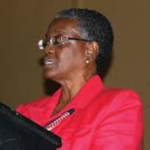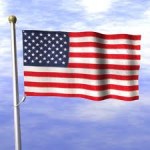
 Dr. Elwood Dunn’s 2012 National Independence Day Oration and Dr. Evelyn Kandakai’s Flag Day Address have sparked a nationwide debate that fits well in ‘Vision 2030’ launched earlier this year.
Dr. Elwood Dunn’s 2012 National Independence Day Oration and Dr. Evelyn Kandakai’s Flag Day Address have sparked a nationwide debate that fits well in ‘Vision 2030’ launched earlier this year.
‘Vision 2030’
 On February 10 President Sirleaf launched ‘Vision 2030’, Liberia’s new development agenda for the next 18 years replacing the old Poverty Reduction Strategy document ‘Lift Liberia’. Two months later the National Vision 2030 Steering Committee Chairman Dr. Togba Nah-Tipoteh elaborated upon the concept of ‘Vision 2030’ in a workshop ‘National Vision 2030 – Transforming the Future’ that kicked-off further debate.
On February 10 President Sirleaf launched ‘Vision 2030’, Liberia’s new development agenda for the next 18 years replacing the old Poverty Reduction Strategy document ‘Lift Liberia’. Two months later the National Vision 2030 Steering Committee Chairman Dr. Togba Nah-Tipoteh elaborated upon the concept of ‘Vision 2030’ in a workshop ‘National Vision 2030 – Transforming the Future’ that kicked-off further debate.
According to its web site, ‘National Vision 2030’ is an impartial, participatory process by which Liberians will build a consensus on the future of their country (thereby) setting the agenda to address the social, political and economic challenges over the next 18-years. The ‘National Vision 2030’ project is co-ordinated by the Ministry of Planning and Economic Affairs (MPEA) and the Governance Commission (GC) that embraces the National Vision 2030 Steering Committee.
Several rounds of consultations have been held since the launch of ‘Vision 2030’, both at the regional level in Liberia, and with Liberians in the USA. Among the suggestions  advanced by participants are changing the National Motto ‘The Love Of Liberty Brought Us Here’ to ‘The Love Of Liberty Unites Us’ and replacing the country’s National Seal. The seal shows a 19th century sailing vessel approaching the coast, a palm tree and agricultural tools. The ship represents the arrival of the colonists – freed slaves and free-born blacks from the USA – as does the superscription ‘The Love Of Liberty Brought Us Here’. The agricultural tools were brought by the immigrants. Another suggestion concerns the granting of citizenship to people of non-negro descent. Since the creation of the Republic of Liberia in 1847 the country’s constitution forbids the granting of citizenschip to persons of non-negro descent who thus also are denied the right to hold real estate.
advanced by participants are changing the National Motto ‘The Love Of Liberty Brought Us Here’ to ‘The Love Of Liberty Unites Us’ and replacing the country’s National Seal. The seal shows a 19th century sailing vessel approaching the coast, a palm tree and agricultural tools. The ship represents the arrival of the colonists – freed slaves and free-born blacks from the USA – as does the superscription ‘The Love Of Liberty Brought Us Here’. The agricultural tools were brought by the immigrants. Another suggestion concerns the granting of citizenship to people of non-negro descent. Since the creation of the Republic of Liberia in 1847 the country’s constitution forbids the granting of citizenschip to persons of non-negro descent who thus also are denied the right to hold real estate.
The 1847 Constitution started with the phrase ‘We the People of the Commonwealth of Liberia (….)’ whereby the word ‘People’ was not considered synonymous with ‘inhabitants’. White residents as well as native or recaptured Africans inhabiting the Commonwealth were excluded from citizenship. It was only in the beginning of the 20th century that ‘Congoes’ (recaptured Africans from intercepted slave-vessels) and tribal Liberians were granted citizenship. The – unfortunately, politically discarded – 2009 Final Report of the Truth and Reconciliation Committee (TRC) also mentions the political, social and economic exclusion of the majority of the Liberian population by the Americo-Liberian creators of the republic and their descendants as one of the root causes of the civil conflict (1989 – 2003).
The National Motto, the Seal, the flag refer to a divided people. The descendants of the ‘pioneers’ and the indigenous population have never been ‘united’ despite President Tubman’s much lauded ‘Unification Policy’ (since 1954) that proved to be sheer lip-service. National holidays, Providence island, the capital Monrovia, towns, streets, buildings, airports are silent but convincing reminders of Liberia’s past as an experiment in ‘black colonialism’. True or not, I was told that the words ‘Remember the Pioneers’ children’ are inscribed at the back of the president’s chair and that a mural in the Executive Mansion carries the same words.
The Flag Day Orator
In 1915 the Liberian Legislature adopted a law declaring August 24 of each year ‘National Flag Day’ to be observed throughout the republic. The Liberian flag is a replica of  the
the  national flag of the United States though with eleven red and white stripes representingthe number of delegates to the Constitutional Convention declaring Liberia an independent and sovereign republic and with only one star depicting Liberia as the first independent African republic. The date of August 24 refers to the first unfurling of the ‘Lone Star’ as the Liberian flag is called, in 1847.
national flag of the United States though with eleven red and white stripes representingthe number of delegates to the Constitutional Convention declaring Liberia an independent and sovereign republic and with only one star depicting Liberia as the first independent African republic. The date of August 24 refers to the first unfurling of the ‘Lone Star’ as the Liberian flag is called, in 1847.
In her Flag Day speech Dr. Evelyn Kandakai, a former Education Minister with more than 35 years of experience in the education sector in Liberia, called on Liberians to respect the National Flag as a patriotic national symbol that represents all Liberians. She praised the seven settler-women who designed Liberia’s first flag and urged Liberians to carefully observe the words of the National Anthem, lyrics written by Liberia’s 3rd president, Daniel Warner (1864-68). Dr. Kandakai urged her audience to honor the flag by sustaining the peace in the country and adopting a National Vision for Development. Without mentioning it, she referred to ‘Vision 2030’. ‘Where there is no vision, the people perish.’ she said.
The Independence Day Orator
Dr. Elwood Dunn is without any doubt one of Liberia’s most distinguished historians and educators and a prolific author. He is Professor of Political Science at Sewanee, the University of the South, in Tennessee, in the United States. Before joining Sewanee, Professor Dunn was Minister of State for Presidential Affairs under President Tolbert (1971-80). He was one of four of Tolbert’s ministers who escaped death by public execution, shortly after the 1980 coup of master-sergeant Samuel Doe. Then Finance Minister Ellen Johnson Sirleaf also was among the lucky ones.
Elwood Dunn was picked by his former colleague now President Sirleaf as the 2012 National Independence Day Orator. He proved to be an excellent choice – though it is important to note that opinions differ on this view. One author accused him of critical selectionism and of ‘sugarcoating 133 years of Americo-Liberian dominance’.
In the first part of his Independence Oration, entitled ‘Renewing Our National Promise’, Dr. Dunn reminded his audience of the ‘what, the ‘why’ and the ‘how’of the Liberian experience since the early 1820s. In the second part he presented his views on the role of values in the reconstruction of the nation-state after the devastating civil wars (1989-2003).
He referred to Liberia’s triple heritage in his analysis of the country’s past: the traditional African heritage, the heritage of Islamic civilization, and the Western heritage. Dr. Dunn did not hesitate to squarely mention Liberia’s historical divide between descendants of settlers and the indigenous population and also drew attention to another dangerous divide: between the majority of poor Liberians and a very small minority of people enjoying wealth and privileges. He stressed the need for mediation that addresses the growing polarization in the Liberian society and to overcome the social divisions. But solutions, he stated, are hindered by the ‘national values deficits’ that he named: empathy, solidarity, trust, justice, mutual goodwill, social responsibility, mutual respect, a sense of common identity, accountability, innovation, and tolerance.’ He ended his speech with a plea to build a stronger Liberia based on all national experiences and reflecting the triple heritage he earlier mentioned.
In an interview he granted the Daily Observer after his Independence Day speech Dr. Dunn became more precise. He strongly condemned the government’s reconciliation policies citing the ineffective Truth and Reconciliation Committee (TRC) and the Independent Human Rights Commission as examples. National reconciliation should have been government’s first priority, he said.
He further stated that the nation’s security issues cannot be addressed by an army, the Armed Forces of Liberia (AFL) and he ruled out the need for a national army. ‘Liberia’s insecurity problem is more of a domestic issue than external. (…) Liberia does not need an army.’
He also revealed that he had refused to be conferred the nation’s highest honor by the Government of Liberia because it discriminates. ‘I told the government that I have been writing and making speeches against our national decorations and symbols on the basis that they do not reflect our oneness as Liberians.’ The honor is the Most Venerable Order of the Knighthood of the Pioneers (italics mine) with the grade of Grand Cordon. President Sirleaf immediately reacted and appointed him to head a small committee with the mandate to ‘initiate changes in the National Order’.
Notwithstanding the foregoing Dr. Dunn lauded the objectives and efforts of the Vision 2030 Steering Committee as well as the farsightedness of President Sirleaf to initiate a national debate on the country’s problems and priorities.
The Republic of South Africa
Elwood Dunn compared the national identity problems in post-conflict Liberia and post-apartheid South Africa. The dominance of the white minority before and during the apartheid era was omnipresent. Geographical names, national symbols and orders reflected this dominance. After the release of Nelson Mandela from prison a process of decolonization started. A decolonization of the mind but also renaming provinces, towns, airports etc. National symbols were changed and now represent the majority of the people. 80% of South Africa’s population is of black ancestry. The National Orator could hardly have ended the interview more provocative: ‘I’m saying these things for us to do for ourselves as Liberians what the South Africans did for themselves.’
I could not agree more. Of course, Liberia’s national identity problem cannot be solved by just renaming towns and streets and changing national symbols. A process of national unification should go hand in hand with national reconciliation. Also here a comparison with South Africa imposes itself. Policies of exclusion should give way to policies of inclusion: politically, economically, socially. However, it is important to mention that there is at least one and maybe a decisive difference between the two countries. Whereas South Africa’s economy is Africa’s biggest economy, Liberia is one of its smallest, its population one of the poorest in Africa.
‘Vision 2030’ aspires that Liberia reaches the status of Middle-Income Country by 2030. With the country’s abundant natural resources this is not impossible but only if the issues of national identity, unification and reconciliation have ceased to be a problem and national security and peace prevails in Africa’s first republic.
